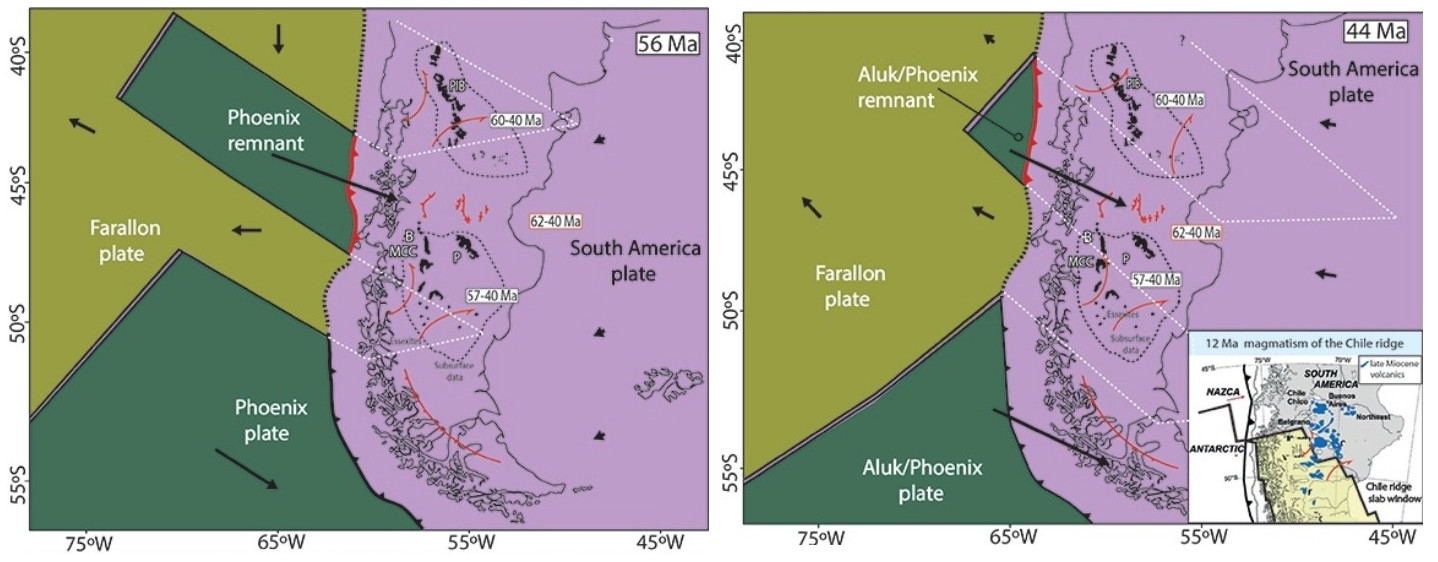Transient plate contraction between two simultaneous slab windows: Insights from Paleogene tectonics of the Patagonian Andes
Info
- Journal: Journal of Geodynamics
- Version of record: 10.1016/j.jog.2018.07.008
- Source code: santisoler/paper-plate-contraction-patagonia
Abstract
Plate kinematic reconstructions show that the Farallon-Phoenix (Aluk) spreading center subducted under South America sometime between the Late Cretaceous and the Paleogene periods. Geological studies have supported a ridge-trench interaction in Patagonia during Paleocene to Eocene times mostly based on the documentation of slab window magmatism and Andean arc-quiescence. However, a revision of most recent works dealing with the Paleogene tectonic evolution of Central Patagonia between 39 °S to 50 °S highlights inconsistencies in this model. Particularly, the existence of two discrete areas with simultaneous slab window-related magmatism separated by a sector with plate-wide contraction, along with a spatio-temporal mismatch between magmatism location and ridge kinematics, preclude a single ridge-trench interaction. With the purpose to better understand this complex tectonic setting, we integrated this updated geological evolution into a plate kinematic model. We propose that the oblique collision of a segmented Farallon-Phoenix/Aluk mid-ocean ridge would explain the latitudinally vari- able tectonomagmatic evolution of Patagonia during early Paleogene times. Finally, this work adds resolution to geodynamic processes in active margins where complex midocean ridge-trench interactions take place.

How to cite
Gianni, G.; Pesce, A. & Soler, S. Transient plate contraction between two simultaneous slab windows: Insights from Paleogene tectonics of the Patagonian Andes Journal of Geodynamics, 2018, 121, 64-75